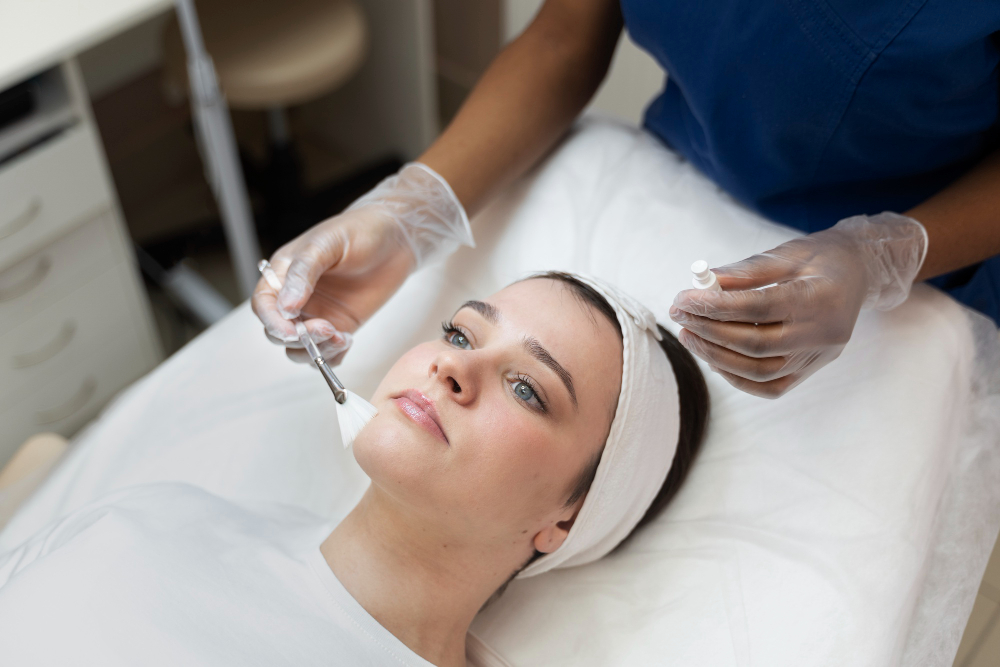Self-conscious about acne scars? How about hyperpigmentation? How about signs of maturing skin?
If you’re wanting to boost your skin’s appearance, consider chemical peels Birmingham. A chemical peel is just like it sounds: a chemical solution is applied to your face to break down old or dead skin cells, to reveal newer, brighter skin cells underneath. Chemical peels are also referred to as dermapeeling or chemexfoliation.
Often considered highly effective at diminishing acne scars and uneven skin tone, chemical peels are a popular treatment that continue to grow in popularity. Here’s what you need to know about chemical peels.
Chemical peels can noticeably improve your complexion
If you’re wanting to revive your skin, chemical peels excel at smoothing out skin texture and evening out skin tone. This is what makes chemical peels popular among individuals who suffer from acne scarring and/or hyperpigmentation, such as melasma (darker patches of skin usually around the mouth).
Even if you don’t have acne scars or hyperpigmentation, chemical peels can still benefit your skin by smoothing out wrinkles, fine lines, tightening pores, and adding brightness to your complexion.
Always seek an experienced professional for chemical peels
When done right, chemical peels can improve your skin’s appearance and texture. When done incorrectly, chemical peels can worsen hyperpigmentation, and can also result in painful burns, scarring, and infections.
You should only receive chemical peels from licensed dermatologists, cosmetic surgeons, and licensed estheticians. Before you receive any chemical peel treatment, do your research first. Look at client reviews and photos of results. Ask friends or colleagues who have received chemical peels how the experience went, and if they have any recommendations on who to see for chemical peels.
Always have a consultation first
An experienced professional will want to talk with you first before you receive any beauty treatment, including chemical peels. This allows them to understand your concerns and desired goals. As you talk, let them know of any past or current medical conditions, as well as any current medications you’re taking. This will help the professional determine if chemical peels are right for you.
There are different chemical peels
Generally, chemical peels are categorized into three types:
- Light: also known as a superficial peel, these are the mildest chemical peels. Light peels only exfoliate the top layer of skin, the epidermis. Light chemical peels provide subtle improvement. You can receive light chemical peels every several weeks until you achieve desired results.
- Medium: medium peels removed damaged cells from both the epidermis and the upper portion of the dermis, the second layer of skin. Medium peels provide moderate improvement and can be performed every six to 12 months until you achieve desired results.
- Deep: deep chemical peels penetrate further into the dermis, the second skin layer. Deep chemical peels provide the most dramatic improvement to your skin. As the most aggressive peel, you should only receive one deep chemical peel in your lifetime.
Different chemical peels use different chemical solutions, such as salicylic acid, lactic acid, carbolic acid, glycolic acid, and trichloroacetic acid.
Follow before and aftercare instructions to optimize results
Follow your professional’s before and aftercare instructions to ensure the best results from your chemical peel. Before and aftercare steps can vary, based on the exact chemical peel you’re receiving, but generally include the following in the days before and after a chemical peel:
- Avoiding sun exposure and tanning beds
- Not touching, rubbing, or picking at your skin
- Avoiding alcohol
Your skincare professional will explain these steps, and additional instructions, in further detail. Essentially, you want to baby your skin leading up to, and after, a chemical peel treatment.
Side effects can vary based on the type of chemical peel
At the minimum, expect redness, flaking skin, and skin tightness or tenderness.
With light chemical peels, expect redness and tenderness. Most patients describe these side effects like sunburn. Expect some skin flaking for several days.
Medium chemical peels cause redness, swelling, and may cause blistering, with skin crusting and peeling off over the course of one to two weeks. Perform daily soaks on the treated area, or as recommended by your doctor or skincare professional.
With deep chemical peels, the treated area will be bandaged for several days. Perform daily soaks on the treated area, or as recommended by your doctor or skincare professional. Healing time can take two to three weeks.
Chemical peels are not covered by insurance
Chemical peels are considered a cosmetic treatment and therefore are not covered by health insurance plans.
This article was written by Leah Campbell for Third Loft Marketing.
For more, visit Pure Magazine


